Envisioning Device-to-Device Communications in 6G
文章目錄
本次分享的文獻
Envisioning Device-to-Device Communications in 6G
Citation:
Zhang S , Liu J , Guo H , et al. Envisioning Device-to-Device Communications in 6G[J]. IEEE Network, 2020, PP(99):1-6.
第六代行動通訊展望
the future sixth generation (6G) mobile network is expected to be an innately intelligent, highly dynamic, ultradense heterogeneous network that interconnects all things with extremely low-latency and high speed data transmission.
Topic
intelligent D2D communication
縮寫詞
mobile user equipments (UEs)
personal mobile workstations
Moore’s law 摩爾定律
5G存在的不足
it is envisioned that 5G cannot fulfill the requirements of emerging
Internet of Everything applications like augmented reality (AR), virtual reality (VR), and mixed reality (MR), which require a convergence of communication, sensing, control, and computing functionalities.
6G相較5G的進步
架構和效能的進步:
Current research trends have shown that 6G network architecture at least has the following characteristics:
-
space-air-terrestrial-sea integrated (SATSI),
-
artificial intelligence (AI) driven,
-
higher frequency bands,
-
ultradense heterogeneous,
-
green energy, security and privacy.
行動終端的進步: They can be regarded as personal mobile workstations
硬體系統的大幅提升:
UEs will equipped with powerful high-end processors, extraordinary rich storage resources, plenty of sensors and ultra-long lifetime batteries.
能夠在本地處理複雜資訊:
smartphones can be regarded as personal mobile workstations that enable on-device AI processing for intelligent networking in the future.
We envision that future UEs will be designed as a type of hand-held mobile computer workstation that can perform intense processes like machine learning, environment sensing, holography processing, AR/VR cloud gaming and photonic computing, while keeping the same thin and portable designs as a phone.
從smart phone到AI-dirven smart phone:
from smart mobIle phone to AI-drIven mobIle phone:
smart phones will have computational capabilities that are on the order of the human brain in the near future.
挑戰
further network densification in 6G will encounter many challenges like severe interference, very complex resource management, a vast amount of signaling, prohibitively high cost and energy consumption.
對策
the utilization of AI techniques
Space-Air-Terrestrial-Sea Integrated Networks: 範圍更廣
相對於5G的進步:通訊網覆蓋範圍擴大
Relying only on current terrestrial networks cannot fulfill the requirements of extremely broad coverage and ubiquitous connectivity. Therefore, 6G will further integrate sea/underwater networks with respect to 5G space-air-terrestrial networks,
特點:
broad coverage and ubiquitous connectivity

組成:
a space network:satellites
an air network:high altitude platform
low altitude UAV
heterogeneous ultradense terrestrial network
功能:
The SATSI network can make full use of the characteristics of global network coverage, full-frequency radio transmission and full application to achieve seamless high-speed communication in space, air, terrestrial and sea domains.
其中的D2D應用
to support low latency and high speed data transmission.

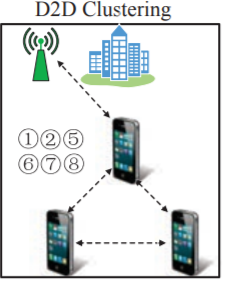
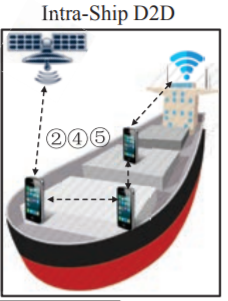
extremely heterogeneous and ultradense network: 密度更大
網路密度提高帶來的挑戰
Note that further network densification will lead to performance degradation due to the severe interference, prohibitively high cost and energy consumption.
Ultradense networks may lead to frequent handover for high speed moving UEs.
D2D communication作用:
to efficiently support a much larger and more diverse set of UEs and applications.
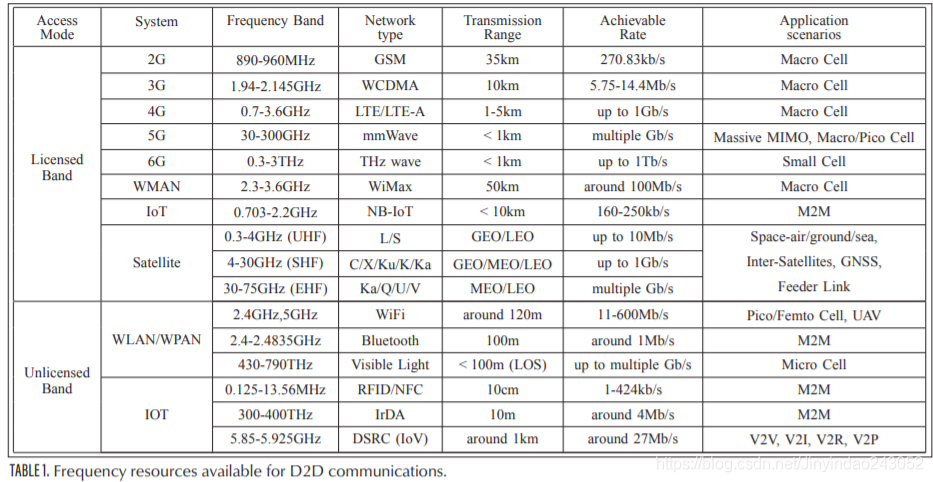
innately intelligent, highly dynamic networks:管制更加動態與智慧
挑戰:現有網路管制存在的問題
As 6G network will be much more complex and dynamic than the preceding generations of wireless networks, traditional network management methods will become untenable.
AI輔助的網路運維和優化
global AI, local AI and on-device AI will cooperate and leverage one another’s advantages to maintain the network operation and optimization.
distributed AI.
AI的具體應用環境
Intelligent resource allocation, network optimization, small BSs or UAVs deployment, network design.
新特點:行動終端變得智慧
UEs like smart phones may provide opportunities for on-device data training, which can sense and learn from the local channel pattern, traffic pattern, moving trajectory, etc.
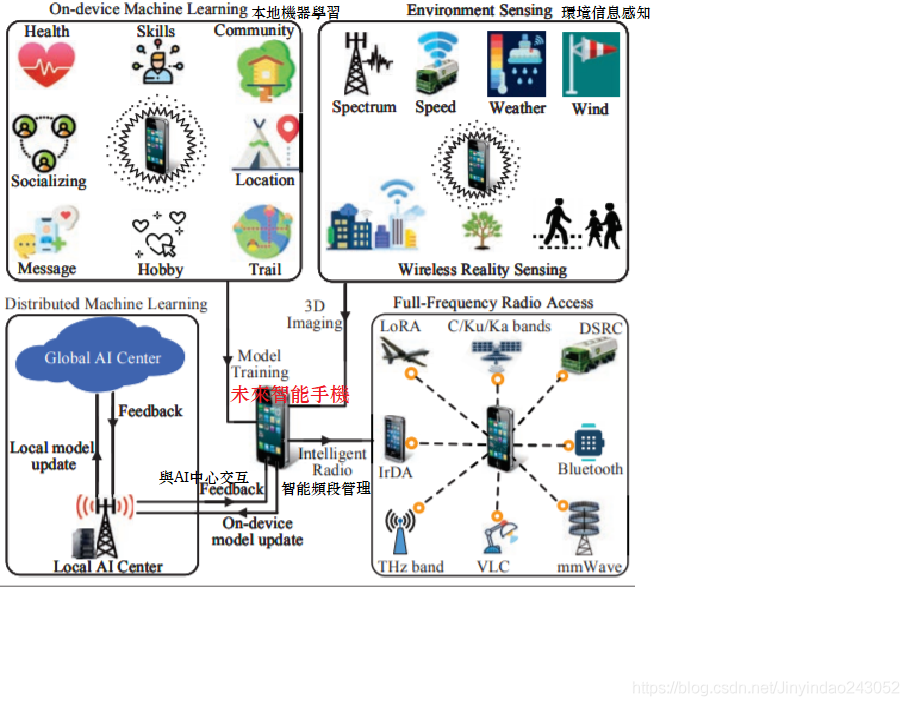
新概念4:IntellIgent D2D-enhanced mobile edge computing
The end-to-end transmission time will be greatly reduced due to the extremely high data rate in 6G,
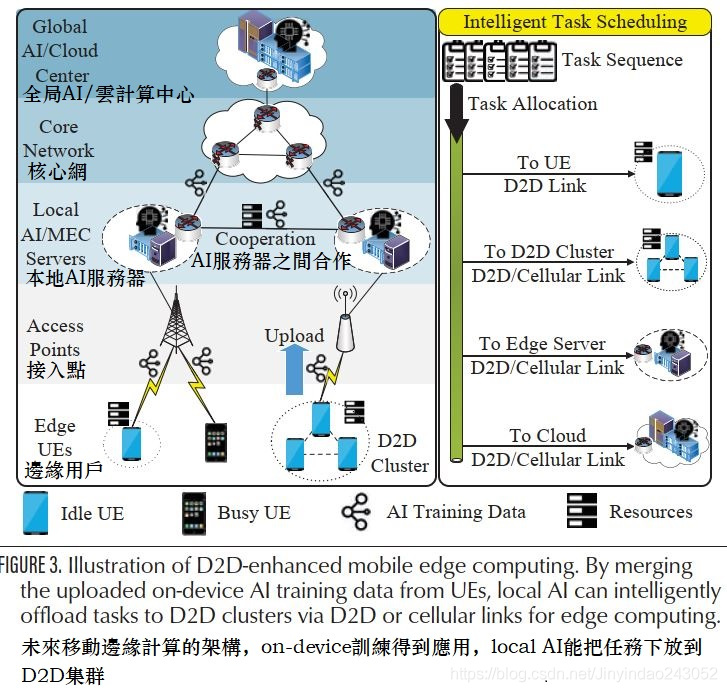
」任務下放,終端合作「模式:
As the capability of single UE is relatively weak, computational intensive tasks may inevitably be allocated to multiple UEs.
AI讓資源分配更智慧
The key and difficult point to employ D2D-enhanced MEC lies in the optimal management and allocation of network communication and computation resources. We envision that AI techniques will be employed to make the resource allocation and optimization intelligent.